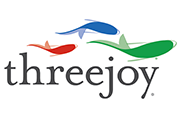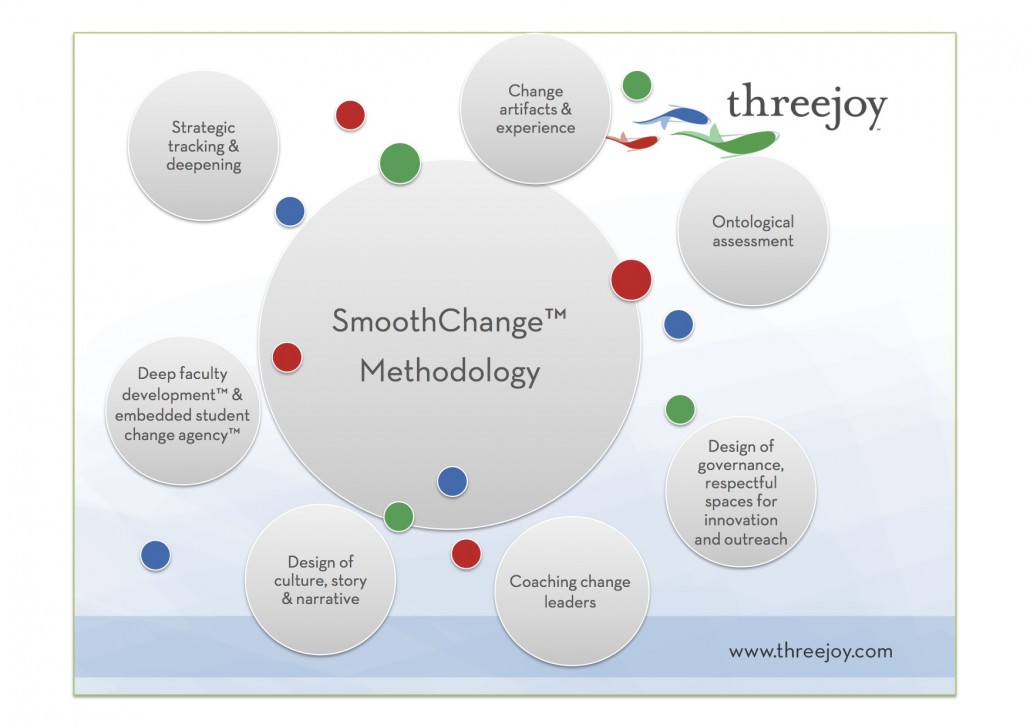Change management is well established as an important consulting discipline in private enterprise, but transformative change in colleges and universities presents special challenges due to key differences in hiring, firing, administration, and governance. ThreeJoy Associates, Inc. has developed the SmoothChange™ methodology to permit rapid, appropriate, and transformative change in the academy with respect for well established traditions of faculty governance and hiring.
Key elements to the SmoothChange™ methodology include the following:
Ontological assessment.
Traditional educational assessment assumes a known ideal, usually based on those practices currently extant. In times of transformative change, norms and ideals are in flux, and it is important to have an assessment process that encourages innovation along those dimensions most in need of change. These dimensions can often be represented by a set of ontological questions: What is engineering? What is education? What is change? What is assessment? Key exemplar: Big Beacon Change Model.
Strategic tracking & deepening.
Traditional change processes seek buy-in from all stakeholders at the outset with the result that those unready for change greatly restrict speed and degree of change and decision making. SmoothChange™ recommends a process of tracking initiative participants according to three speeds: (1) no, (2) slow, and (3) go. Once tracked, all participants are offered training, experiences, and governance hooks that accelerate their change according to their personal readiness and aspirations through a process of individualized and group deepening. Key exemplar: BB Three Tracks of Transformation.
Design of governance, respectful spaces, and outreach.
Traditional change in universities is accomplished through the issuing of orders in the existing hierarchy or via bottom-up efforts by entrepreneurial faculty. In times of change, meso-level dot connnecting structures and communities—respectful structured spaces for innovation (RSSIs)—are particularly usef to encourage innovation, lateral alignment, and diffusion. Key exemplars: UIUC iFoundry, Olin-Illinois Partnership.
Design of culture, story & narrative.
Traditional educational change starts and ends with reform of content, curriculum, and pedagogy, but to get at the deep cultural shifts of transformative change requires modification of underlying assumptions, which requires the telling and propagation of new stories. Educators view much social and traditional media as mere public relations (PR), but telling new stories is constitutive of the reality of transformative change. Key exemplars: BB Manifesto & A Whole New Engineer.
Design of change artifacts & experiences.
Talk of education reform inevitably leads to new class content, curriculum structure, or pedagogical modification, but many successful efforts start with the design of new experiences and artifacts. Key exemplars: iFoundry iCommunity handbook & UFMG Engenharia Recebe.
Deep faculty development™ & embedded student change agency™.
See more under training.
Coaching change leaders.
See more under coaching.

